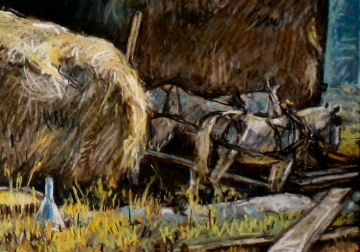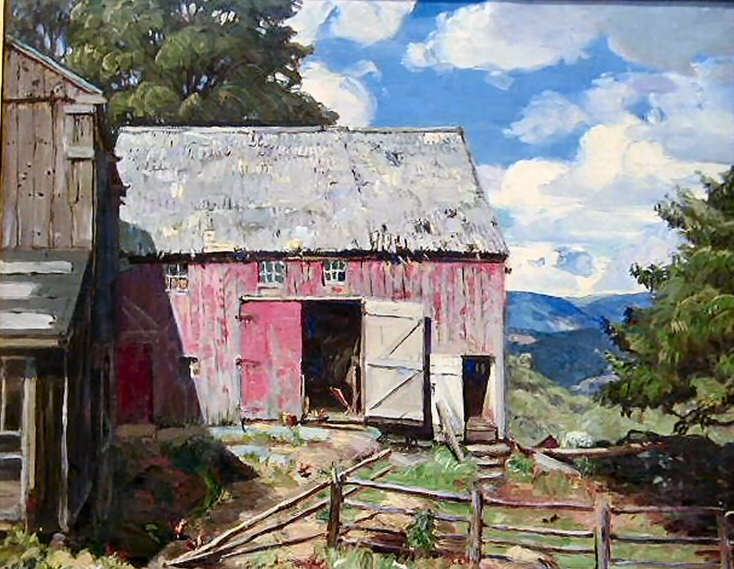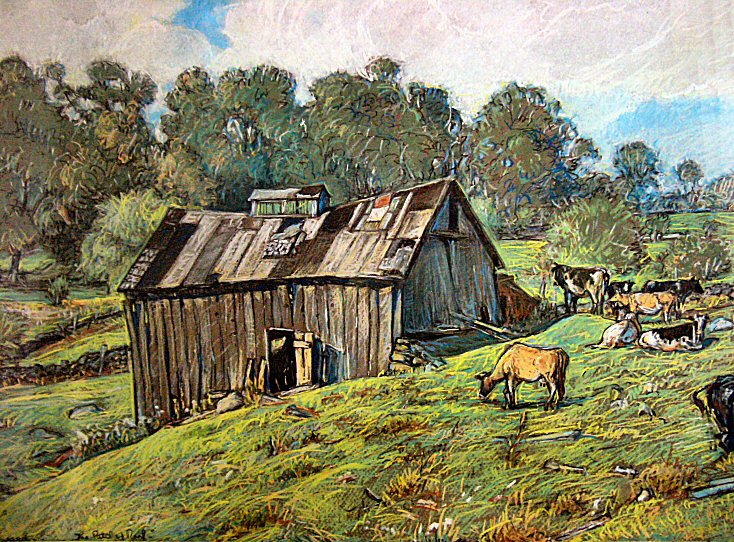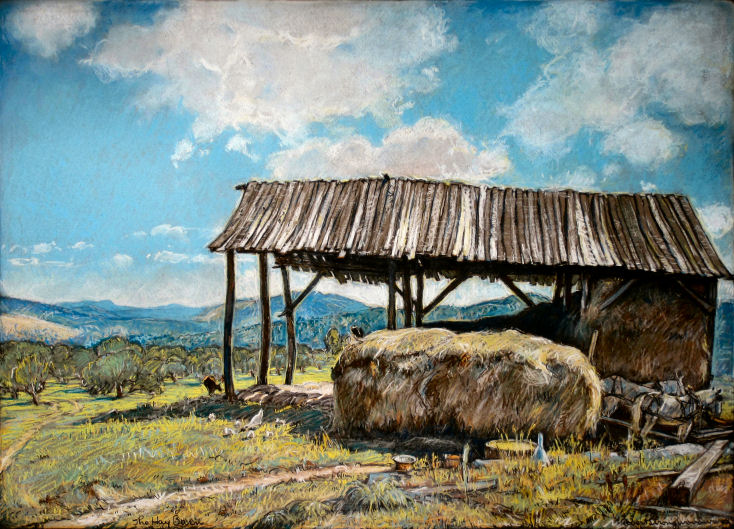Quick Reference
Prior to 1928
Unknown
Pastel on Board
Landscape
Barns, Pastures
22" x 29"
J.H. Miller Galleries, 1928
Unknown
NA
Featured Artwork: The Hay Barn
RSW's Diary Comments
None.
Additional Notes

 Springfield Republican, Apr. 25, 1928
Springfield Republican, Apr. 25, 1928
Click on the HEADLINE to see the whole article
 This piece was exhibited at the 1928 J. H. Miller
Co. Galleries Exhibition along with 37 other paintings and chalk drawings. Click on the article to the right to see the full article.
This piece was exhibited at the 1928 J. H. Miller
Co. Galleries Exhibition along with 37 other paintings and chalk drawings. Click on the article to the right to see the full article.
 This is also an interesting time period for Woodward. He is just getting his career back on track after his
disastrous Redgate fire in 1922. He is experimenting quite a bit with new styles, techniques, subjects, as well as putting a great deal of effort into his chalk drawings.
Through 1927 to 1928, he would actually draw more pastel paintings than he would paint oil paintings.
This is also an interesting time period for Woodward. He is just getting his career back on track after his
disastrous Redgate fire in 1922. He is experimenting quite a bit with new styles, techniques, subjects, as well as putting a great deal of effort into his chalk drawings.
Through 1927 to 1928, he would actually draw more pastel paintings than he would paint oil paintings.

 A close up the horses pulling the hay cart. They do
not appear to be especially large, however, a typical pull
A close up the horses pulling the hay cart. They do
not appear to be especially large, however, a typical pull
horse is anywhere from 14 to 16 hands which is 5 feet
to almost 5 and half feet from ground to shoulder.
 Note the distant peak on the left hand side of this painting. We wonder if that is Camel's Hump Mountain.
If so, this early drawing may be the precursor to other interesting barn subjects such as, Saddleback Barn (1935)
and Vermont Barns (1929).
Note the distant peak on the left hand side of this painting. We wonder if that is Camel's Hump Mountain.
If so, this early drawing may be the precursor to other interesting barn subjects such as, Saddleback Barn (1935)
and Vermont Barns (1929).
 It is not too hard to miss where Woodward offers you some perspective as to the size of this hay barn (*more
like a shed wouldn't you say?). In the shadows to the right of the hay cart are two horses dwarfed by the hay pile under the shed.
It is not too hard to miss where Woodward offers you some perspective as to the size of this hay barn (*more
like a shed wouldn't you say?). In the shadows to the right of the hay cart are two horses dwarfed by the hay pile under the shed.
What is really
fascinating about this hay barn is the natural forms of the post holding up the rickety roof. Those are not milled lumber post, nor do we see any mortise and tenon
joints. The lumber appears to be strung together by rope.



.png)
